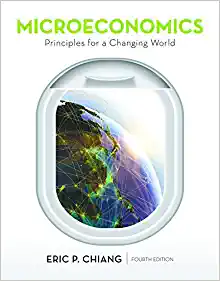Question
a. You decide to head over to Pizza na wypasie. They are located not that far from SGH and they offer double cheese as standard.




a. You decide to head over to "Pizza na wypasie". They are located not that far from SGH and they offer double cheese as standard. The standard pizza cost PLN 6 and one liter of beer just 8. Sketch your budget constraint, being certain to label any relevant intercepts. (assume that you can purchase fractions of pizza and beer in different sized glasses.)
b. Let's say that your utility for a bundle of pizza (P) and beer (B) is given by the following function:
U(P,B) = 30*(P^(1/7))*B^(1-1/7) for 7>0
i. Show your marginal utility of pizza...
ii. ... and your marginal utility of beer:
c. What combination of pizza and beer maximizes your utility given your budget constraint? Add this optimal point and the indifference curve passing through it to your graph of the budget constraint.
d. You arrive to the restaurant and you realize that there is an "All-you-can eat buffet" for just PLN 2 Sketch your new budget constraint. (Hint: your possible consumption bundles still consist of beers and pizzas.)
e. (e) Explain in words what happens to the number of pizzas and beers in your optimal bundle, given the utility function in part (b).




Step by Step Solution
There are 3 Steps involved in it
Step: 1

Get Instant Access to Expert-Tailored Solutions
See step-by-step solutions with expert insights and AI powered tools for academic success
Step: 2

Step: 3

Ace Your Homework with AI
Get the answers you need in no time with our AI-driven, step-by-step assistance
Get Started


